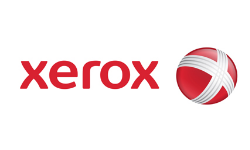Teaming up across the miles’: Xerox used Belbin to manage conflict and optimise communication in a virtual, international project team
Xerox
Employees: ~23,000
Industry: Workplace and digital printing solutions
Location: USA, Canada, UK and Malaysia

Objectives
Minimise miscommunication, misunderstandings and duplication of work in a geographically-dispersed project team.
Outcomes
The project team:
- learned how to draw on the strengths of each team member;
- worked together to create one of Xerox's largest product launches of the year.
Introduction
Xerox is an American corporation that sells document management and digital printing technologies to help organisations communicate, connect and work in over 160 countries.
Challenge
Xerox were developing a complex product – a multifunction printer called ColourQube – for launch.
Project teams were tasked with adapting technology from other industries without precedent, and the work involved the integration of complex code, mechanical devices and physics in order for the subsystems to work. One subsystem alone involved five teams in two different locations.
The complexity of the setup meant that the opportunity for miscommunications and misunderstandings was high. The vice presidents and directors found that they were spending too much time on team dynamic dilemmas.
Solution
Xerox implemented Team Accelerator workshops for the ColourQube team in the USA. The team learned how to draw on the strengths of each team member and worked together to create one of Xerox’s largest product launches of that year.
Process
Belbin has been used since 2003 on a variety of initiatives. Team Role learning is incorporated into Xerox’s Team Accelerator workshops and Lean Six Sigma Black Belt curriculum to help product development teams identify members’ strengths, weaknesses, roles and skills.
As part of the Team Accelerator workshops, the ColourQube began by establishing team ground rules. Then, each member was asked to develop their perceived needs and align expectations.
Before the training, the team found that parallel solutions developed by different groups often led to conflict. This training helped the team identify these problems before they began. As the team identified their strengths and weaknesses, they developed a better understanding of the group’s dynamics and how to communicate more effectively to avoid problems.
Results
Team Role learning enabled team members to draw more effectively on their strengths.
Teams could better deploy the strengths present in their team (especially across geographical boundaries). Recognition of the talent and uniqueness in team members added value to the teams as a whole.
The project teams were able to resolve issues before they became problems and minimise duplication of work, which improved efficiency and decreased frustration.
Collaborators on this complex project were able to work successfully together across the globe to create one of Xerox’s largest product launches of that year.
Tools used
A selection of Belbin reports were used, and a Belbin workshop was delivered by Belbin North America.

"Not everyone is going to fit into a perceived mould. To be successful, I have to play to my strengths and understand areas where I am not as strong. Team Accelerator and my Black Belt training helped me to identify my skill set and tailor my techniques. For instance, I’ve updated how I run my staff meetings and have made them much more efficient." - Don Titterington, VP
Contact us
Please fill out the form and we'll be in touch.
Discover individual and team strengths using Belbin Team Role reports

Belbin Individual Reports
Before you can analyse your teams, you need to look at each individual's contribution. So, the first thing you will need to do is to generate a Belbin Individual report for each member of the team.
Find out more
Belbin Team Reports
Whether you're forming a new team, introducing new people to an existing team, or trying to resolve issues within a team, a Belbin Team report can help you to manage it.
Discover more
Why Use Belbin?
Belbin Team Roles are used to identify behavioural strengths and weaknesses in the workplace. Whether developing people, resolving conflict or fine-tuning high performance...
Read more